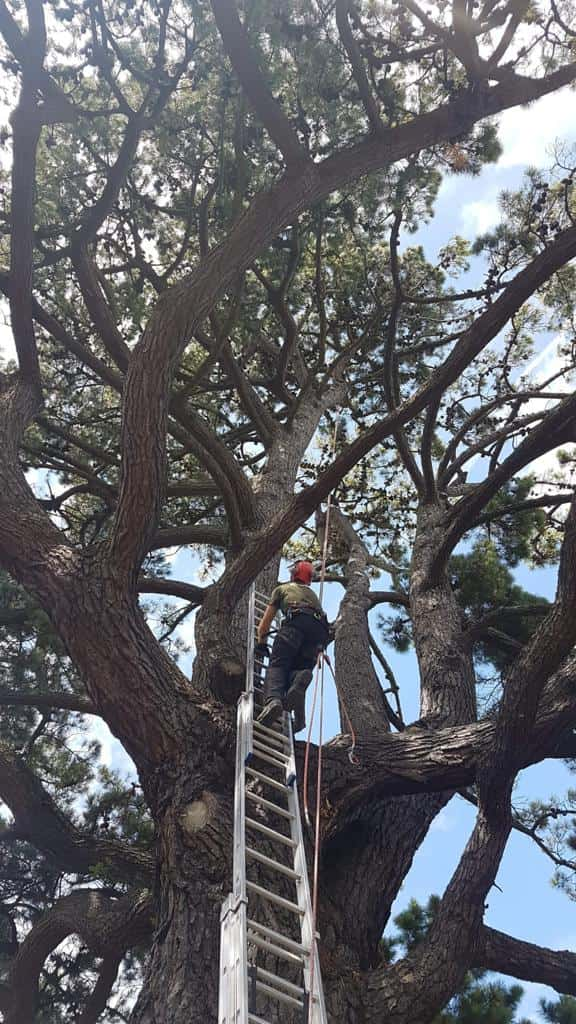Introduction
Mature trees are a prized feature of any landscape. They offer shade, shelter, beauty, and even habitat for wildlife. However, they also require specialised care to ensure their safety and longevity. Left unmanaged, even the most majestic tree can become a liability—posing risks to property, people, and the tree itself.
At LM Tree Surgery Lee-on-the-Solent, we understand the delicate balance between preserving natural form and ensuring structural safety. Crown management is a key strategy in maintaining the health and safety of mature trees. Whether you’re a homeowner or managing grounds in Lee-on-the-Solent, Hampshire, this guide explains how crown management works—and why it matters.
What Is Crown Management?
Crown management involves the strategic pruning and shaping of the tree’s canopy (or crown), which includes all its branches, stems, and leaves. Unlike routine trimming, crown management focuses on health, safety, and stability, rather than just appearance.
There are several types of crown work:
- Crown thinning – removing select branches to reduce density and improve air flow
- Crown lifting – removing lower branches to increase clearance from the ground
- Crown reduction – reducing the overall size of the canopy without damaging its shape
- Deadwooding – removing dead or dying branches before they fall unexpectedly
Each method is used depending on the tree species, condition, and environment.
Why Mature Trees Need Special Care
Mature trees can be deceptively strong. While their size and age offer stability, they are also more vulnerable to internal weaknesses, root problems, and environmental stress. Without proper crown care, issues that start in the canopy can lead to full-scale failures.
Key concerns for mature trees:
- Weight distribution becomes unbalanced
- Deadwood can fall unpredictably
- Wind resistance increases during storms
- Lower branches may obstruct driveways or buildings
- Disease can go unnoticed in dense crowns
Crown management ensures these risks are mitigated through regular and targeted care.
Improves Tree Safety
One of the main goals of crown management is to keep people and property safe. Heavy limbs, especially those overhanging homes, roads, or footpaths, pose a significant risk if left unchecked.
Safety improvements include:
- Reducing wind resistance to prevent storm damage
- Identifying and removing structurally weak limbs
- Preventing limbs from encroaching on buildings
- Reducing the chance of falling debris in public spaces
At LM Tree Surgery Lee-on-the-Solent, we often perform crown reduction on trees near coastal properties, where wind loading is especially high during winter months.
Enhances Tree Health and Structure
Beyond safety, proper crown care contributes to the overall health of the tree. By removing congested, diseased, or competing branches, the tree can better distribute nutrients and maintain a strong, balanced shape.
Health benefits of crown management:
- Encourages healthy growth by improving light and air penetration
- Removes points of infection or decay
- Reduces the risk of pest infestations
- Allows the tree to recover energy and reduce strain on weak limbs
This process must always be carried out by trained professionals to avoid over-pruning, which can shock the tree or cause long-term damage.
Preserves Visual Appeal and Longevity
A well-managed crown maintains the natural aesthetic of the tree while also extending its lifespan. Overgrown trees can become top-heavy or awkward in shape, making them both unattractive and unstable.
Aesthetic and lifespan benefits:
- Maintains natural symmetry and proportion
- Prevents sprawling or hazardous growth patterns
- Keeps the tree in good condition for future generations
- Contributes to the overall look of the landscape
Especially in places like Lee-on-the-Solent, where many gardens benefit from long-established trees, crown management keeps outdoor spaces both safe and attractive.
When to Schedule Crown Work
Timing is critical. While some crown work can be done year-round, many species respond better when pruned at specific times of the year. It’s also important not to cut during periods of active growth or harsh frost.
General timing guidance:
- Winter (dormant season) is ideal for structural pruning
- Early spring is best for visibility before leaf growth
- Avoid late summer and autumn, when trees begin preparing for dormancy
- Urgent work—such as deadwood removal—can be done as needed
LM Tree Surgery Lee-on-the-Solent provides expert advice on the right time and type of crown work based on the tree species and setting.
Signs Your Tree May Need Crown Management
If you’re unsure whether your mature tree needs attention, look out for the following warning signs:
- Low-hanging branches obstructing footpaths or views
- Cracks or splits in major limbs
- Dead or decaying branches within the canopy
- Uneven shape or overextended limbs
- Signs of fungal growth or pest activity
Prompt crown management not only improves safety but can also help avoid the need for more drastic interventions later on.
Conclusion
Crown management is more than a cosmetic measure—it’s a professional approach to keeping mature trees safe, stable, and thriving. By addressing potential risks early, encouraging healthy growth, and maintaining structural integrity, you’re protecting your tree and your property alike.
At LM Tree Surgery Lee-on-the-Solent, we take pride in caring for the region’s most valued trees. Whether you need a light crown thinning or a full canopy review, our skilled team offers tailored solutions with long-term benefits. Mature trees are an asset—keep them safe with the right crown management.
Call us on: 023 8235 6393
Click here to find out more about LM Tree Surgery Lee-on-the-Solent
Click here to complete our contact form and see how we can help with your tree needs.

